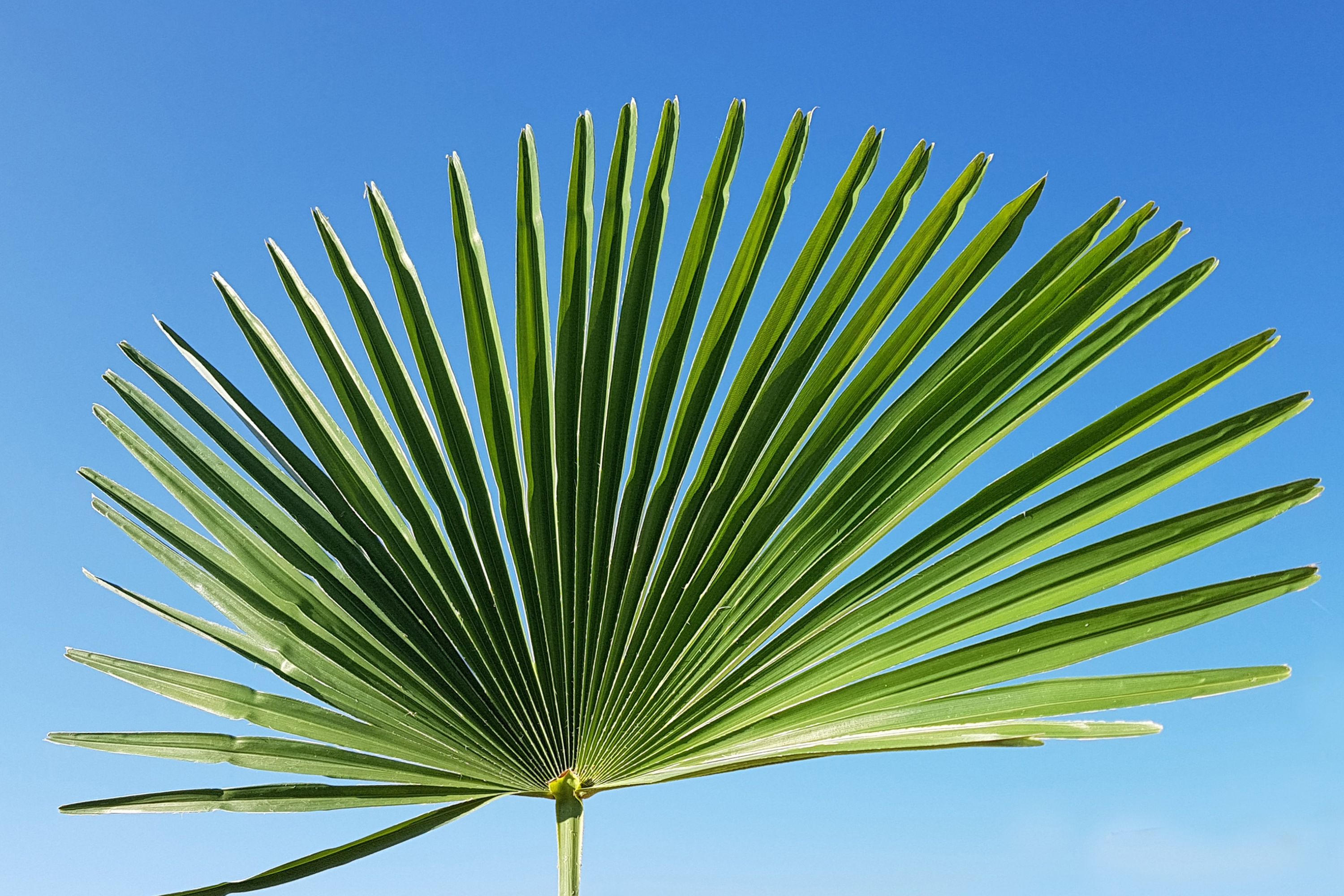"Windmill palm "
(Trachycarpus fortunei)

Description
Trachycarpus fortunei, the Chinese windmill palm, windmill palm or Chusan palm, is a species of hardy evergreen palm tree in the family Arecaceae, native to parts of China, Japan, Myanmar and India. Growing to 12–20 m (39–66 ft) tall, Trachycarpus fortunei is a single stemmed fan palm. The diameter of the trunk is up to 15–30 cm (6–12 in). Its texture is very rough, with the persistent leaf bases clasping the stem as layers of coarse fibrous material. The leaves have long petioles which are bare except for two rows of small spines, terminating in a rounded fan of numerous leaflets. Each leaf is 140–190 cm (55–75 in) long, with the petiole 60–100 cm (24–39 in) long, and the leaflets up to 90 cm (35 in) long. It is a somewhat variable plant, especially as regards its general appearance; and some specimens are to be seen with leaf segments having straight and others having drooping tips. The flowers are yellow (male) and greenish (female), about 2–4 mm (0.079–0.157 in) across, borne in large branched panicles up to 1 m (3 ft 3 in) long in spring; it is dioecious, with male and female flowers produced on separate trees. The fruit is a yellow to blue-black, reniform (kidney-shaped) drupe 10–12 mm (0.39–0.47 in) long, ripening in mid-autumn. This plant has been cultivated in China and Japan for thousands of years. This makes tracking its natural range difficult. It is believed to originate in central China (Hubei southwards), southern Japan (Kyushu), south to northern Myanmar and northern India, growing at altitudes of 100–2,400 m (328–7,874 ft). Windmill palm is one of the hardiest palms. It tolerates cool, moist summers as well as cold winters, as it grows at much higher altitudes than other species, up to 2,400 m (7,874 ft) in the mountains of southern China. However, it is not the northernmost naturally occurring palm in the world, as European fan palm (Chamaerops humilis) grows further north in the Mediterranean. Trachycarpus fortunei has been cultivated in China and Japan for thousands of years, for its coarse but very strong leaf sheath fibre, used for making rope, sacks, and other coarse cloth where great strength is important. The extent of this cultivation means that the exact natural range of the species is uncertain. Trachycarpus fortunei is cultivated as a trunking palm in gardens and parks throughout the world in warm temperate and subtropical climates.
Taxonomic tree:







